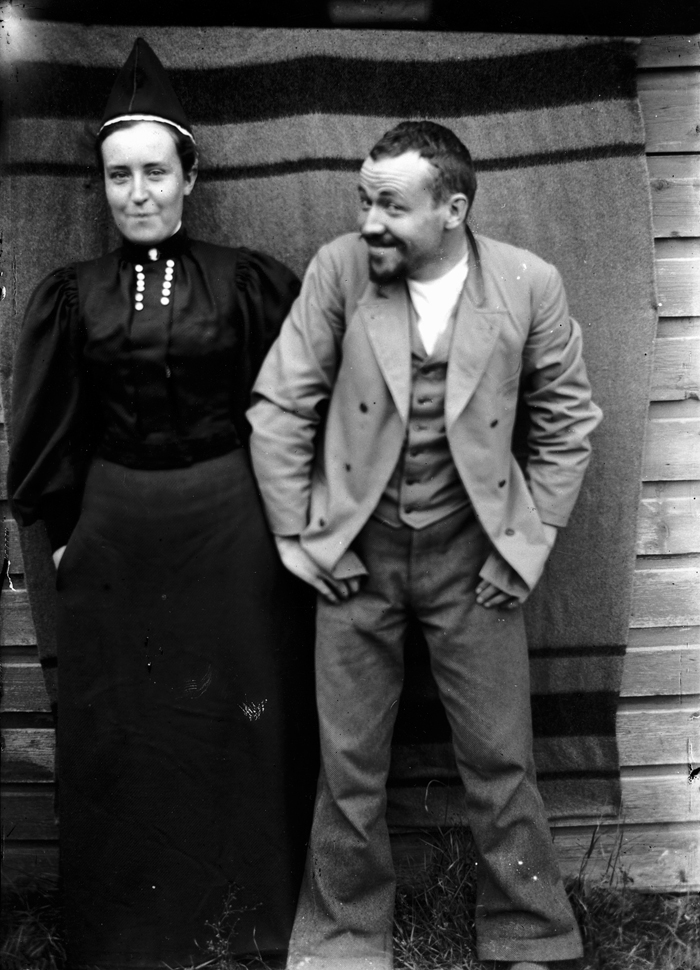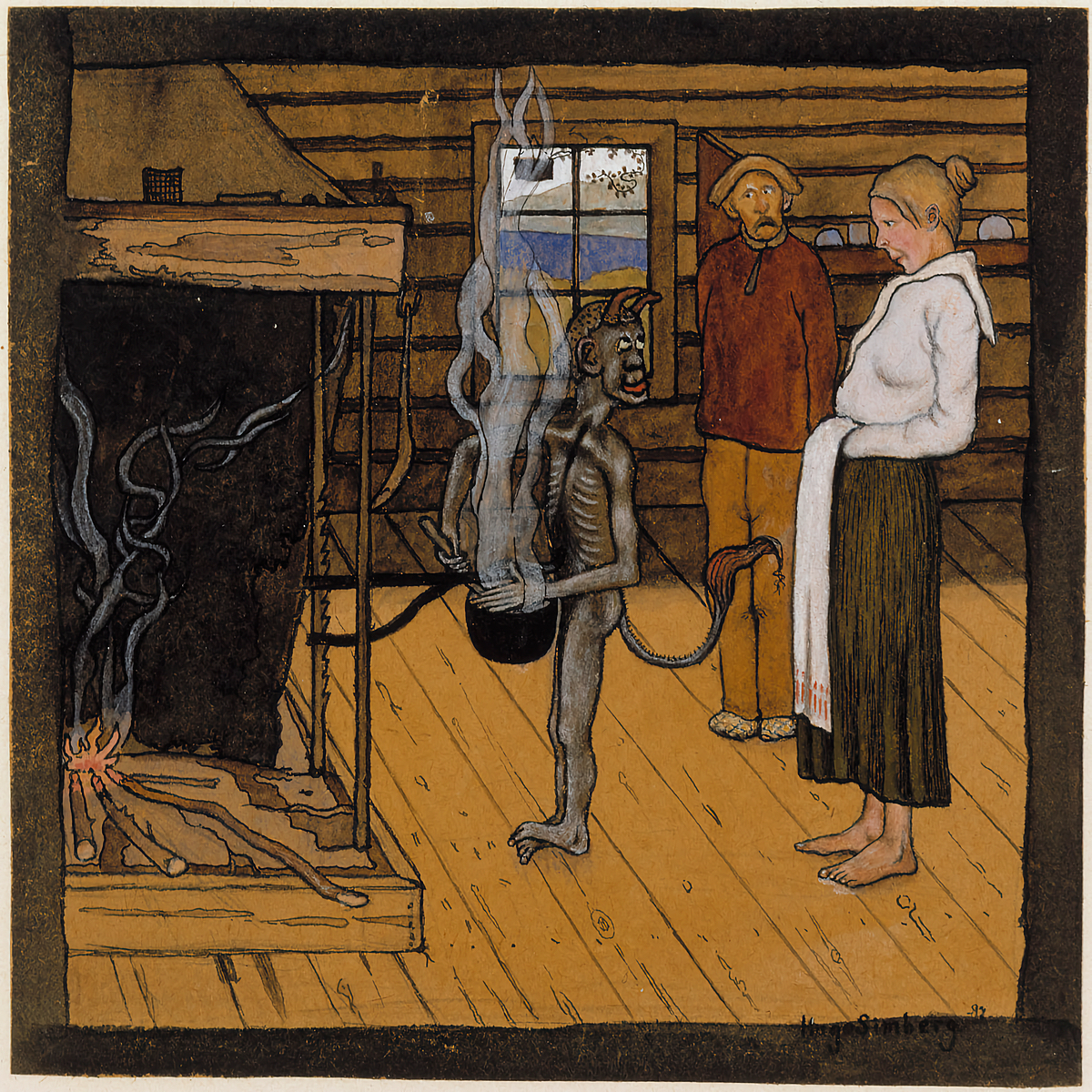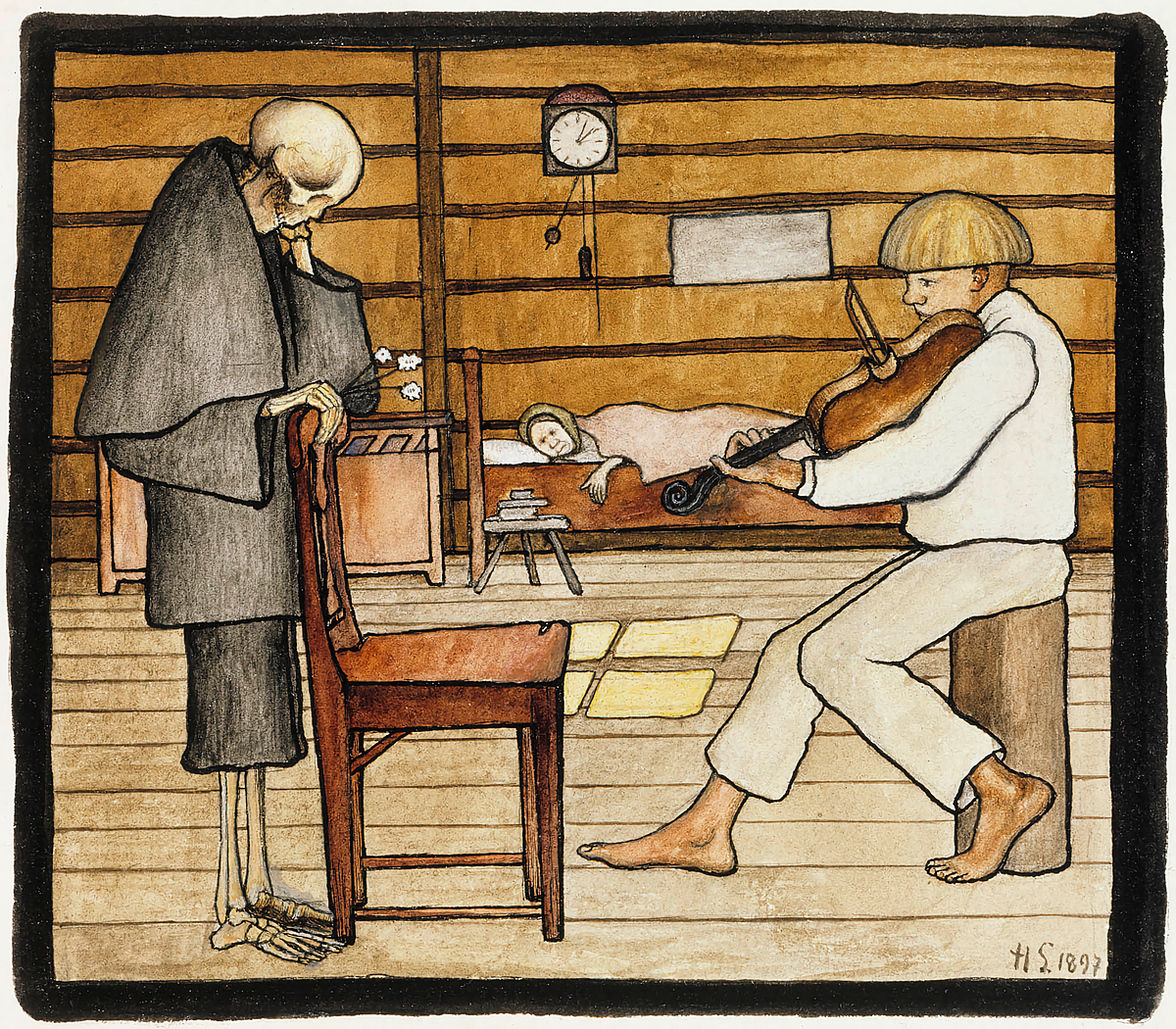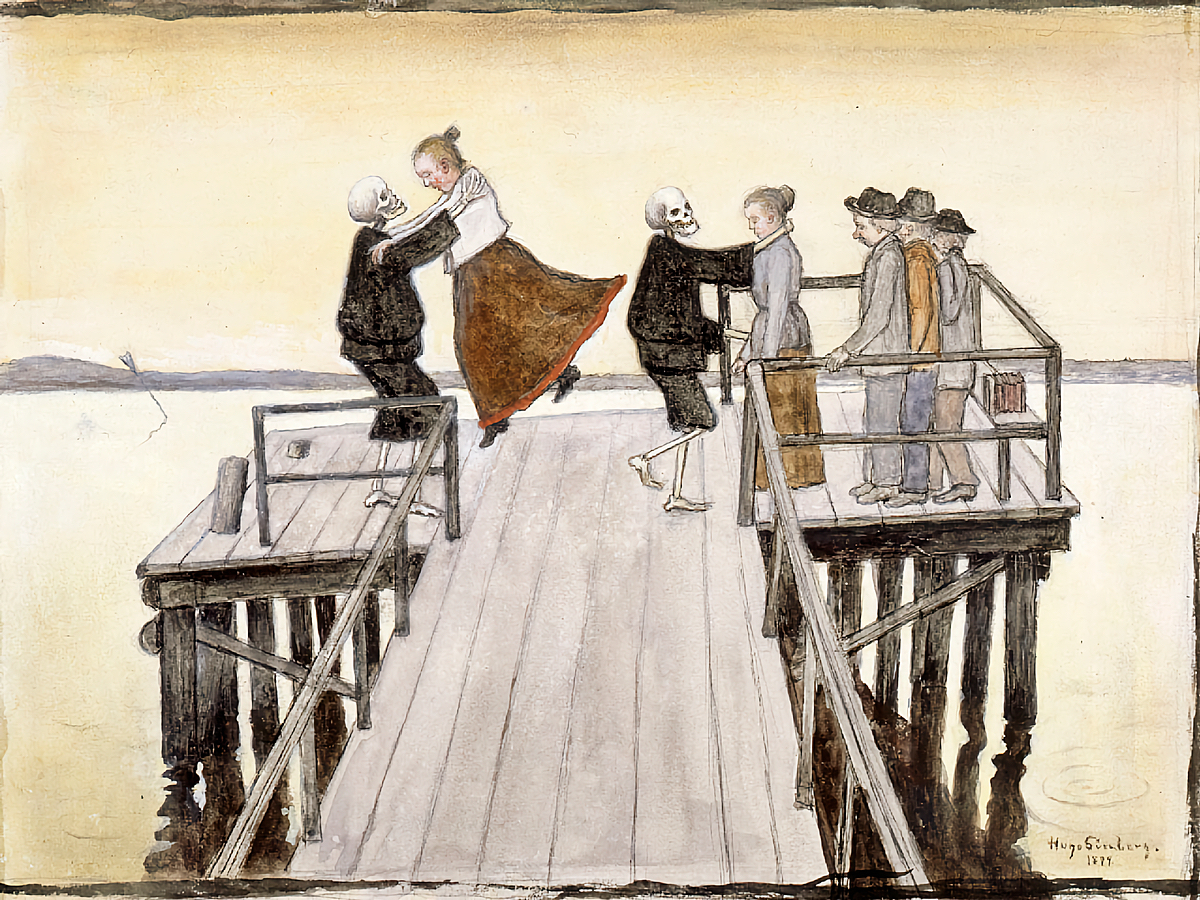“The painting itself gives the answer. Everyone has to find it for themselves”
– Hugo Simberg
How do we live with the inevitability of death? Denial is popular. As the American director Woody Allen put it: “I’m not afraid of death; I just don’t want to be there when it happens.”
We can laugh and not make things overly doomy, using humour to mock our vanities, something Mexican artist José Guadalupe Posada (1851 – 1913) did with his calaveras, representations of human skulls and skeletons now seen in Mexico’s annual celebration The Day of the Dead (Día de Muertos).
French philosopher Montaigne (28 February 1533 – 13 September 1592) surmised the paradox in how we live with death: “To lament that we shall not be alive a hundred years hence, is the same folly as to be sorry we were not alive a hundred years ago.” He posed a question: “If you know not how to die, never trouble yourself; nature will fully instruct you upon the spot; she will exactly do that business for you; take you no care.”
The author John Updike (March 18, 1932–January 27, 2009) wrote in his 1996 memoir, Self-Consciousness: “Each day, we wake slightly altered, and the person we were yesterday is dead. So why, one could say, be afraid of death, when death comes all the time?”
Hugo Simberg (24 June 1873 – 12 July 1917) was a Finnish symbolist painter and graphic artist. And for him, as Marja Lahelma writes for the Finnish National Gallery, which has hundreds of Simberg’s pictures in its archive, “death is not strange and not even frightening but is more a part of life and he seems on friendly terms with it.”

Hugo and Blenda Simberg see the lighter side
Hugo Simberg was born at Hamina (in the original Swedish: Fredrikshamn), the son of Colonel Nicolai Simberg and Ebba Matilda Simberg (née Widenius). In 1891 he began his studies at the Drawing School of the Viipuri Friends of Art. After more eduction at the Drawing School of the Finnish Art Society from 1893 to 1895, he became the pupil of artist Akseli Gallen-Kallela (26 April 1865 – 7 March 1931) at his wilderness studio Kalela in Ruovesi. Gallen-Kallela’s work had been romantic, but that changed when his daughter’s died in 1895.
In 1896 Simberg went to London, and in 1897 to Paris and Italy. He became a member of the Finnish Art Association and returned to teach at the Drawing School of the Viipuri Friends of Art.
In 1904 he was hired to decorate the interior of St John’s church in Tampere (now Tampere Cathedral), a project which he carried out with Magnus Enckell between 1904 and 1906. On the ground floor lose to the altar you can see The Garden of Death. According to a note by the artist on the back of his initial sketch, the painting depicts “the place where dead people end up before entering heaven.”
From around 1907 to 1913 he taught at the Drawing School of the Finnish Art Association at Ateneum. In 1910 he married Anni Bremer. They had two children, Tom and Uhra-Beata.
Simberg died in Ähtäri on 12 July 1917.
The artist’s biographer, Helena Ruuska, suspects that for a long time he lived an unknown disease, possibly syphilis. As Lahelma notes: “Does this explain his relationship to death because he knew it was coming perhaps sooner than expected?
Hugo Simberg prints are available to buy in the Flashbak Shop.
Would you like to support Flashbak?
Please consider making a donation to our site. We don't want to rely on ads to bring you the best of visual culture. You can also support us by signing up to our Mailing List. And you can also follow us on Facebook, Instagram and Twitter. For great art and culture delivered to your door, visit our shop.












